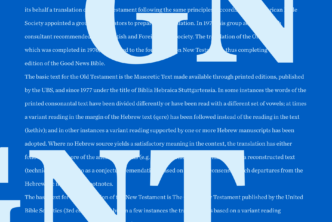To say that interest in Septuagint studies is growing rapidly has been a favorite pastime of Septuagint scholars at least since the foundation of the IOSCS nearly fifty years ago. While this tradition may seem closer to an affirmation of personal academic relevance than anything else, it has nevertheless been and remains true. Septuagint scholarship moves at a glacial pace because it is both a small and complex field, caught in an institutionalized gulf between Old and New Testament studies. Yet move it does, as evident from the ongoing efforts of many scholars to finally complete the Göttingen critical edition of the Septuagint after over a century of industry.
A Burgeoning Field
I am not sure if glaciers accelerate, but Septuagint scholarship may be doing just that at last. Evidence for this can be found in the steady stream of published doctoral dissertations in the field over the last decade, such as Seulgi Byun’s recent contribution and the forthcoming volume by Marieke Dhont. Plus there are now two specialized lexicons of the Septuagint with another underway, numerous modern language translations, at least two large-scale and ongoing commentary projects (here and here), a number of handbooks (e.g., here and here) and other important tools that have also emerged of late, with more sure to come.
Barriers to Study
But why? Readers of this blog probably have less reason to ask than most. Yet even among biblical scholars the Septuagint has considerably less chique than many areas of study. The reasons for this are numerous and, from my vantage point, interconnected. At the risk of oversimplification, the Septuagint as a corpus could be considered a kind of intertestamental literature with fuzzy boundaries. It occupies the greyish intersection at the peripheries of the typical specializations in the academy that surround it. It is a complicated area of study that few have the training to work with, much less teach, and so the cycle continues. Even for those who are actively part of Septuagint scholarship it can be very difficult to stay that way. As Karen Jobes, co-author of Invitation to the Septuaint, once told me, “For most of us, Septuagint studies is a night job.”
Reasons to Research
Septuagint studies has a lot to offer those looking for work. Analyzing how the translators approached their task requires understanding of the Ptolemaic Egyptian social context, close attention to Hebrew, Aramaic, and Greek, and is a prerequisite to using the Septuagint for Hebrew Bible textual criticism.
The Septuagint is also a monument of the Koine phase of the Greek language that both offers and stands to benefit from linguistic insights, primarily in relation to contemporary papyri and inscriptions. Doing so will lend greater clarity to our understanding of the New Testament as well from linguistic and exegetical perspectives. And all of this must be undertaken with careful attention to the phenomena of textual production and scribal transmission in the Hellenistic Jewish context.
Top Places to Study
That said, here are my recommended places to study the LXX worldwide, as posted previously on my blog:
Part 2 – the OZ, South Africa, and Israel

Logos has a host of tools and resources that will maximize your study of the LXX on every level.





